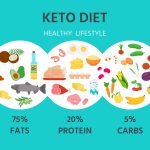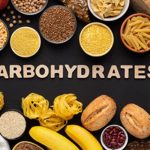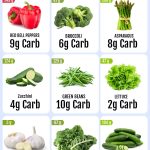The Atkins Diet, renowned for its low-carbohydrate approach, has become a beacon of interest in the realm of weight loss and overall health. Central to its philosophy is the induction of a metabolic state known as ketosis. In this comprehensive guide, we will delve into the synergy between the Atkins Diet and ketosis, unraveling the science behind the two. Additionally, we’ll provide external links for further exploration and address frequently asked questions (FAQs) to foster a holistic understanding of how this dietary strategy impacts our bodies.
Table of Contents
ToggleThe Atkins Diet: A Low-Carbohydrate Paradigm
The Atkins Diet, conceptualized by Dr. Robert C. Atkins, challenges the conventional wisdom of low-fat diets by advocating a reduction in carbohydrate intake. This dietary approach is divided into four phases: Induction, Balancing, Pre-Maintenance, and Maintenance. The induction phase, in particular, is instrumental in initiating the body into a state of ketosis.
Understanding Ketosis
1. Metabolic Shift:
- Ketosis is a metabolic state where the body shifts from using glucose as its primary energy source to utilizing ketones, which are derived from the breakdown of fats. This transition is triggered by a significant reduction in carbohydrate intake.
2. Fat Burning Mode:
- In ketosis, the body becomes adept at burning stored fat for fuel, leading to potential weight loss. This process is particularly prominent during the early stages of the Atkins Diet.
3. Appetite Suppression:
- Ketosis is associated with reduced feelings of hunger, contributing to the satiety often reported by individuals following the Atkins Diet.
Uncover the Connection Between GERD and Diet: Your Comprehensive Resource
The Atkins Diet and Ketosis: A Symbiotic Relationship
1. Induction Phase:
- The induction phase of the Atkins Diet limits daily carbohydrate intake to 20-25 grams, primarily sourced from vegetables low in starch. This drastic reduction prompts the body to enter ketosis.
2. Protein and Fat Emphasis:
- While carbohydrates are restricted, the diet encourages the consumption of protein and healthy fats. This ensures a sufficient caloric intake and helps sustain the body during the transition to ketosis.
3. Blood Sugar Regulation:
- For individuals with insulin resistance or diabetes, the Atkins Diet’s impact on blood sugar levels may offer a stabilizing effect, potentially aiding in diabetes management.
External Resources for In-Depth Exploration:
- Official Atkins Website
- Harvard T.H. Chan School of Public Health – Ketogenic Diet
- Medical News Today – Ketosis
Frequently Asked Questions: Addressing Common Queries
Q1: How long does it take to enter ketosis on the Atkins Diet?
- A1: The time to enter ketosis varies among individuals but typically occurs within 2-7 days during the induction phase.
Q2: Can you achieve ketosis without following the Atkins Diet?
- A2: Yes, other low-carbohydrate diets or fasting approaches can also induce ketosis. The Atkins Diet is just one method that emphasizes this metabolic state.
Q3: Are there potential side effects of ketosis?
- A3: Some individuals may experience temporary side effects known as the “keto flu,” including fatigue, headache, and irritability. Staying well-hydrated and ensuring adequate intake of electrolytes can mitigate these symptoms.
Q4: Is the Atkins Diet safe for everyone?
- A4: While many individuals thrive on the Atkins Diet, it may not be suitable for everyone. Pregnant or breastfeeding women and those with certain medical conditions should consult healthcare professionals before adopting the diet.
Managing Blood Sugar with Raisins: A Delicious Solution for Diabetes
Tips for a Successful Atkins Diet and Ketosis Experience:
1. Gradual Carbohydrate Reduction:
- Ease into the induction phase by gradually reducing carbohydrate intake in the days leading up to starting the Atkins Diet. This may mitigate potential side effects.
2. Hydration is Key:
- Stay well-hydrated throughout the diet, particularly during the initial stages. Hydration supports the body’s adaptation to ketosis.
3. Incorporate Fibrous Vegetables:
- Prioritize fibrous vegetables during the induction phase to ensure an adequate intake of essential nutrients and support digestive health.
4. Monitor Electrolytes:
- Pay attention to electrolyte levels, especially sodium, potassium, and magnesium, to counteract potential imbalances associated with ketosis.
Detailed Methods for Incorporating the Atkins Diet into Ketosis:
Induction Phase Guidelines
- Carbohydrate Limitation: Restrict daily carbohydrate intake to 20-25 grams, mainly from low-starch vegetables.
- Protein Inclusion: Ensure an adequate intake of protein from sources such as meat, poultry, fish, and tofu.
- Healthy Fats: Emphasize healthy fats like avocados, nuts, and olive oil to support energy needs.
- Hydration: Drink plenty of water to stay hydrated, especially as the body adapts to ketosis.
Transitioning to Later Phases
- Carbohydrate Gradual Increase: As you progress through the phases, gradually increase carbohydrate intake while monitoring the body’s response.
- Diversify Food Choices: Introduce a variety of foods to ensure a well-rounded nutritional profile.
- Long-Term Maintenance: Adopt a sustainable approach to maintain the benefits of ketosis and overall health.
In Conclusion: A Holistic Approach to Wellness
The Atkins Diet and ketosis represent a symbiotic relationship where dietary choices induce a metabolic state that can impact weight, appetite, and potentially benefit certain health conditions. However, it’s essential to approach this dietary strategy with careful consideration and, ideally, under the guidance of healthcare professionals.
Explore external resources for a more in-depth understanding, and delve into the FAQs for clarity on common concerns. Empower yourself with knowledge to make informed decisions on the journey to optimal health through the harmonious integration of the Atkins Diet and ketosis.












